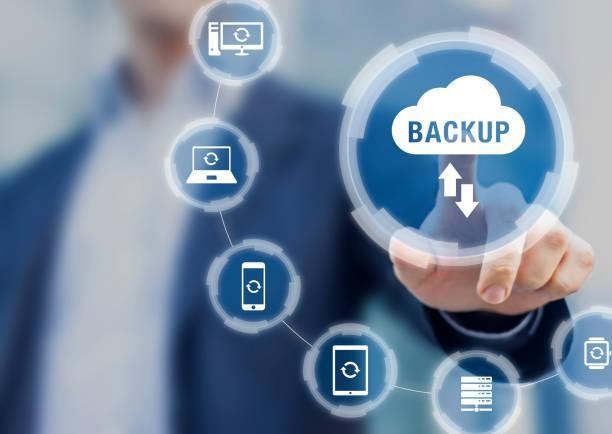In the wake of increased data attacks and hacks, companies must be aware of potential data losses and attacks. The awareness is also critical due to the sensitive nature of the data protected by these companies and the consequences of data loss to the company operations and functionalities. Whether a small or large business, you need to understand the key elements of data loss prevention strategies and how to implement them to protect the company.
As a beginner, you need to understand how to implement these DLP strategies to ensure data safety, but you cannot achieve that without the right skills and approaches. Consider this guideline helpful when implementing DLP strategies.

Data loss prevention components
DLP strategies have various components critical to boosting data loss prevention strategies. These components include:
- Prevention of data loss in motion
The data in motion refers to network traffic data exchanged through different company networks and technologies. It boosts the company network servers involved in managing company network traffic and servers.
- Securing end-point data
End-point data refers to data between different end-point devices, workstations, servers, communication technologies, and other digital devices. The goal is to monitor the independent devices within and out of the company network systems. It also protects all the employee devices used for activities such as bringing your own device (BYOD).
- Data to be protected
DLP strategies will determine what data needs protection based on the data sensitivity, policies, and the data’s nature. The Data Loss Prevention Assessment will help you determine the type of data to be protected and can also determine the channels and systems to protect company and customer data. The assessment is also necessary to prevent data leakage from all the possible vulnerable points.
- Protecting data at rest
Data at rest refers to static data, i.e., the data not in motion or exchanged between different networks. Such data include data stored in various storage devices such as physical and virtual data backup systems, physical and virtual servers, and all the company databases. It also protects data stored in employee laptops and other USB storage devices.

DLP Solutions
You can deploy different solutions to keep your data safe from loss. These solutions include:
- Network-based DLP solutions
This DLP solution focuses on protecting data in motion but mainly on the organization network. While installing the solutions within the network, the team focuses on protecting the data from loss while on transfer between different systems. It monitors the organization’s network traffic to prevent data loss.
The main focus areas include email traffic, social media traffic, messenger-based communication, and SSL traffic. Network-based DLP solutions also enforce organization data sharing and disclosure policies and ensure employees abide by the rules and these policies.

- Datacenter and storage-based DLP solutions
Sometimes organizations can also lose data while on storage sites and mediums. The storage solution focuses on protecting data at rest to ensure confidential data remains safe and confidential. While installing the solutions, the company can focus on main areas such as physical and cloud-based servers, databases, and data SharePoint to ensure all data is secure.
- End-point DLP solutions
You also must protect the end-point devices that exchange data between different devices. Installing these solutions will focus on protecting devices such as laptops, computers, mobiles, and tablets connected to networks. Other devices to focus on include USB and POS devices to protect the data since they are largely involved in data usage.
- Coming to content-aware DLP solutions
Organizations specify the authorized channels for data transfer and sharing; sometimes, these channels may be compromised, or employees may use other channels to transfer the documentation. The main goal of the solutions focuses on implementing and enforcing company policies to boost content classification to ensure employees share sensitive data only through restricted and authorized channels. Other objectives of the protection policies are to focus on network and channel use monitoring, blocking, and remediation functionalities to ensure data safety while on transfer.
Data types protected by DLP solutions
DLP solutions focus on protecting different data types to ensure the safety and security of all the data going into and out of the organization. The data type protected includes:
- Customer data
Companies hold a wide range of customer data, and some of this data is too sensitive for anyone to access or lose. Therefore, companies rely on DLP solutions to ensure customer data such as addresses, credit card details, social security numbers, telephone numbers, and other private data stays confidential. A breach could potentially affect the customer trust in the company worse; a data loss could mean more litigations and fines for lack of privacy and data protection protocols.

- Corporate data
Corporate data entails different data companies consider confidential, including financial statements, upcoming projects, competitive advantage data, strategies, research and development, documents related to mergers and acquisitions, and all sorts of data. Protecting these data is essential for ensuring the company remains competitive, retains a positive reputation, and keeps the company secret.
- Intellectual property data
One of the most critical data for companies is the intellectual properties that define upcoming company innovation and secrets related to the company activities and functions. DLP solutions will focus on protecting source codes, intellectual documentation records, product and service design documentation, price list, and pricing strategies for protecting the IPs.
Conclusion
DLP solutions are critical for protecting IP, customer, and corporate data to prevent data loss and leakages. The goal is to ensure the company retains its reputation and data security and help the company maintain a competitive advantage. The solutions cover various aspects, such as data in motion, at rest, and data between endpoints.

















































